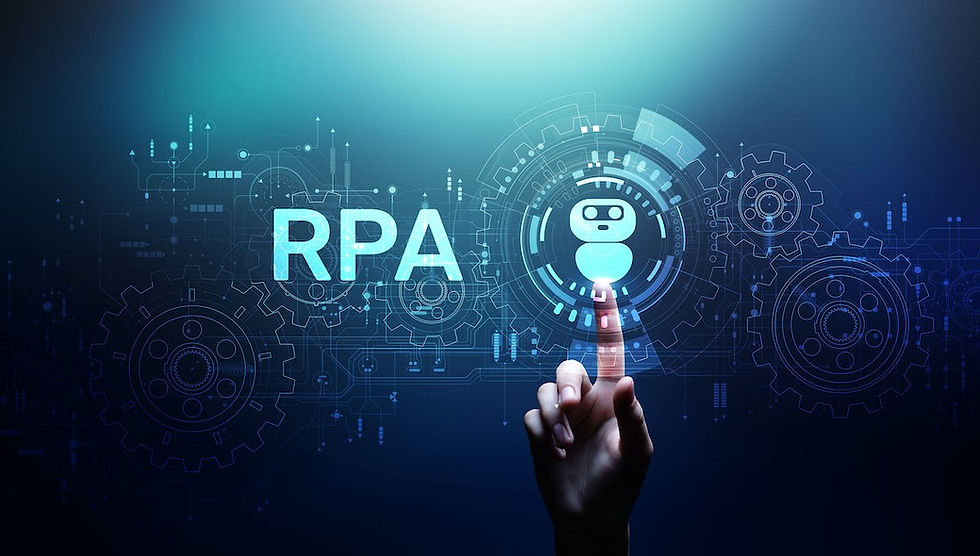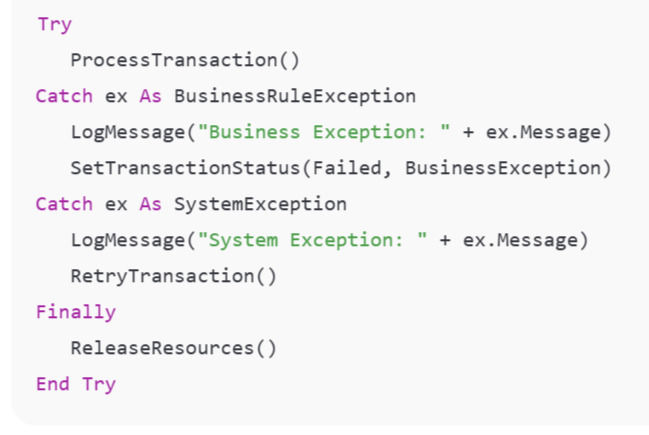Advanced Exception Handling In RPA Workflows
- k4666945
- Sep 17
- 3 min read

Introduction
Important feature of RPA workflows is exception handling, which guarantees continuous and faultless process execution. Because bots frequently interact with several systems, they are prone to errors including network failures, incorrect data, or application downtime. A systematic way to identify, manage, and recover from these mistakes without interfering with business processes is advanced exception handling. It helps robots keep process stability even under unanticipated circumstances by allowing them to record failures, cleverly retry transactions, escalate problems when necessary, and sustain process stability. Boost your automation skills with RPA Online Training and learn to build enterprise-grade bots from scratch.
Advanced Exception Handling In RPA Workflows
Ensuring that Robotic Process Automation (RPA) bots perform dependably in sophisticated corporate operations relies heavily on exception management. A bot that stops because of an un-handled error might cause major disruption to an otherwise flawless automation pipeline. Strong fault tolerance, reduction of business interruption, and maintenance of process integrity call for advanced exception handling systems. In contemporary RPA projects, exception handling goes beyond basic try-catch blocks. Designing error management at many tiers—process level, queue level, and system integration level—is part of this.
Types of Exceptions in RPA:
RPA workflows run into several types of exceptions. Network problems, server downtime, or UI element unavailability cause system exceptions when the bot is unable to reach an application. Business exceptions result when input data fall short of established validation rules. Application exceptions arise when an automated system sends an error response, like HTTP 500 or SAP short dumps. These exceptions help the bot to determine whether to attempt again, elevate, or reject a transaction.
Framework for Exception Handling:
At the transaction level, an advanced RPA architecture employs structured workflows to handle exceptions. Every important activity is wrapped inside a try-catch-finally block by the bot. The catch block registers the exception information in a main logging database. A final block guarantees that cleaning procedures including releasing system resources, shutting browser sessions, or updating queue items with failed status take place.

This method guarantees that the transaction outcome is always current, and that the workflow never abruptly ceases.
Retry and Recovery Mechanisms:
To prevent resource waste and endless loops, retries have to be thoughtfully planned. Bots employ queue-based architecture to allow repeat behaviour. The orchestrator re-queues the transaction with an increased retry number when a transaction fails owing to a transient system exception. Once the bot surpasses the retry limit, it flags the transaction as permanently failed and forwards it. Recovery logic could include re-authenticating to an ERP system, refreshing a browser session, or relaunching a desktop program.
Dead Letter Queue Design:
Handling transactions that repeatedly fail despite retry calls best practice is a dead letter queue (DLQ). The bot moves a transaction to the DLQ once it reaches a maximum retry count for manual review. This guarantees that further processing won't be hindered by erroneous data. Human supervisors can keep an eye on the DLQ and either modify the input data or raise the problem to IT support. Join the best RPA Training Institute in Noida to gain hands-on experience with real-time projects and industry use cases.
Centralized Exception Logging and Monitoring:
Without thorough logging, exception handling is not complete. Every exception ought to record transaction ID, timestamp, exception type, and stack trace. Logs are kept either in a central database or sent to monitoring tools such ELK or Splunk. Real-time monitoring dashboards show the total of unsuccessful transactions, retry attempts, and process downtime. Process owners can use this data to implement root cause analysis and spot recurring problems.
Exception Escalation and Notifications:
Exception handling in business-scale automations has to include a notification system. Via email, Microsoft Teams, or Service-Now, a bot sends alerts to operations teams upon detecting major system faults. Notifications include transaction reference, error code, and suggested repair steps. Escalation rules could specify which degree of severity calls for urgent attention.
Role of AI in Exception Prediction:
Modern RPA systems employ machine learning to forecast anomalies. By examining past fault logs, an artificial intelligence model may detect patterns and predict possible system outages or data-related failures. Bots can then actively stop execution or reroute payments before an exception happens.
Conclusion
Reliability, fault tolerance, and minimal human intervention are guaranteed by sophisticated exception handling in RPA processes. Enrol at a leading RPA Training Institute in Delhi to master advanced RPA tools and frameworks for career growth. A well-designed system groups exceptions, implements retry and recovery strategies, and interfaces with monitoring tools. By separating failed transactions and forwarding them to the appropriate teams, it supports business continuity. Exception handling becomes a major distinguishing factor between resilient automations and weak ones as RPA spreads across company systems. A strong automation environment able to gracefully manage production-scale failures results from the interaction of structured error management, dead letter queues, central logging, and AI-based forecasting.



Comments